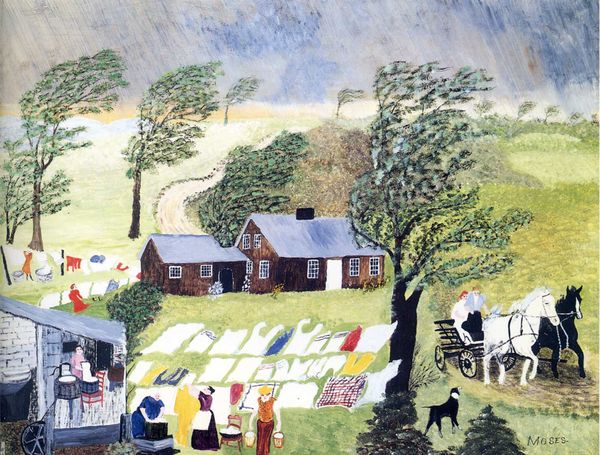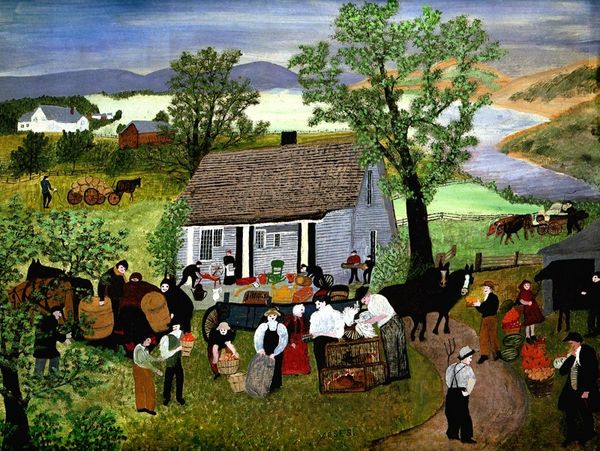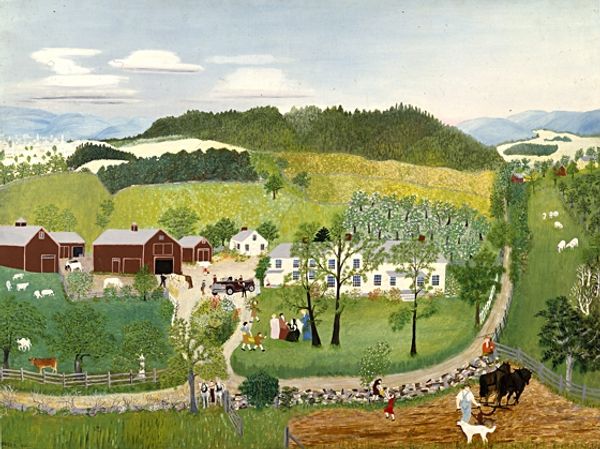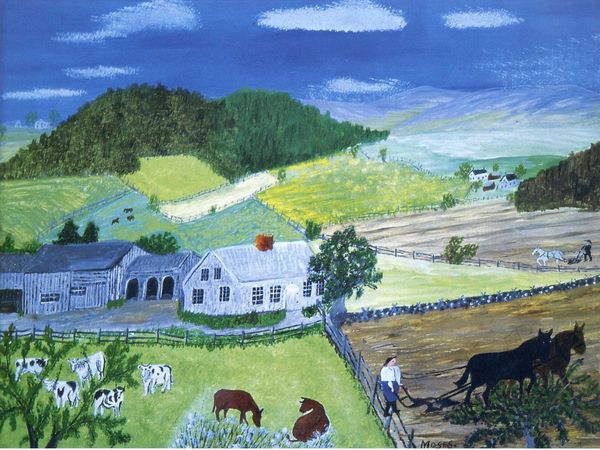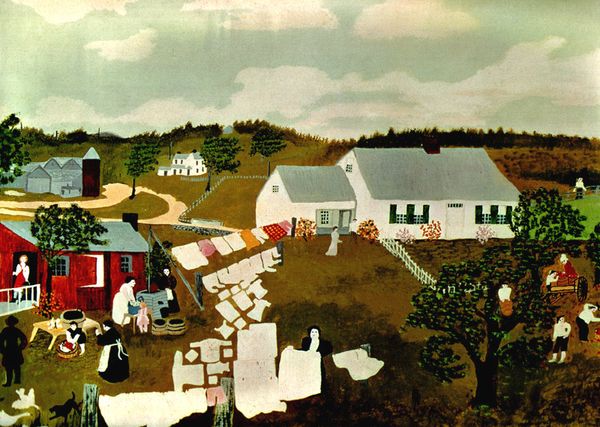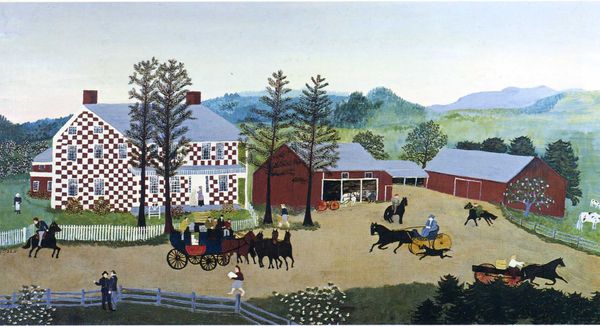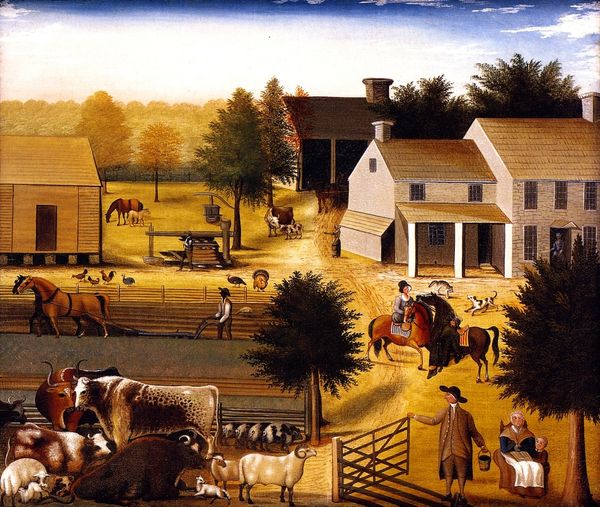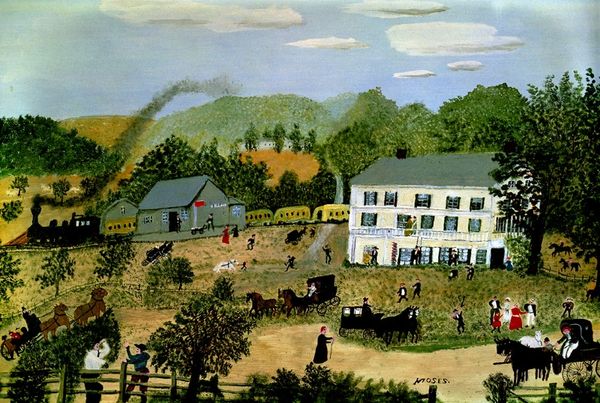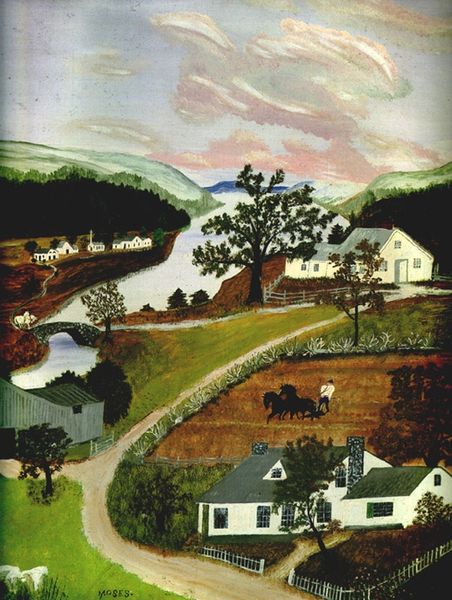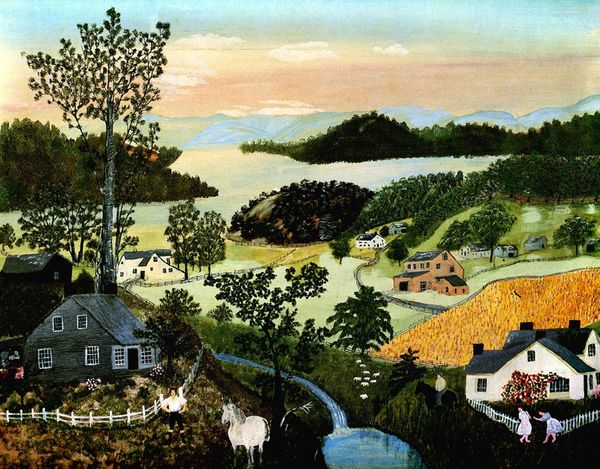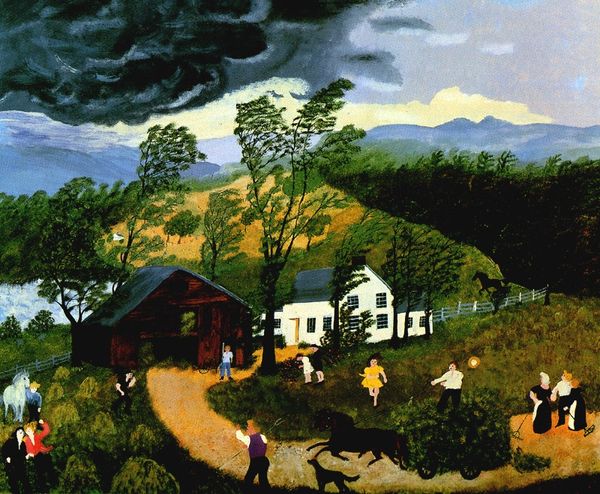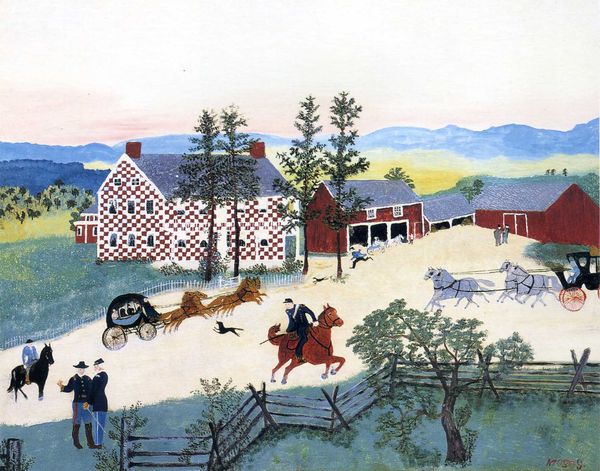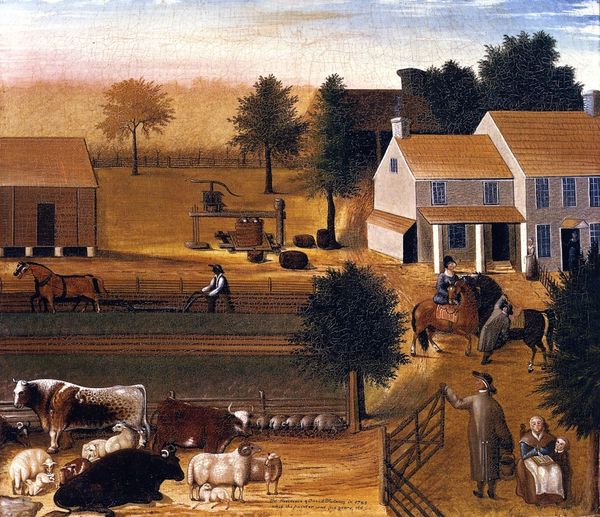
painting
#
rural-area
#
painting
#
landscape
#
folk-art
#
naive art
#
genre-painting
#
realism
Copyright: Grandma Moses,Fair Use
Editor: Here we have Grandma Moses' "Country Fair" from 1950, a vibrant, teeming landscape rendered in oil on masonite. It's so... busy. Almost overwhelming in its detail. What do you see in this piece, beyond the surface level of a folksy scene? Curator: Beyond the cheerful, almost saccharine, facade, I see a potent commentary on community, labor, and tradition in mid-20th century America. Moses romanticizes rural life, sure, but she also subtly reveals the mechanics of a tightly-knit society, dependent on agricultural cycles and communal events. How does the representation of labor strike you, given her own story as a self-taught, late-in-life artist? Editor: That's fascinating. I hadn't considered her biography. The figures are almost generic, archetypal... do you think she intentionally flattens the individual to emphasize the collective? Curator: Precisely. Look at the gendered division of labor. Who populates the foreground activities versus the background chores? And how might we read that through a feminist lens, considering the limited roles often prescribed to women of that era? This painting, then, becomes more than just a celebration; it’s a coded map of social structures and power dynamics. Editor: I see what you mean. The bustling activity almost obscures those underlying tensions, but they're definitely there. It's making me rethink how I initially perceived this work. Curator: Exactly. Art often functions as both mirror and mask, reflecting ideals while simultaneously concealing complexities. Moses uses a seemingly innocent depiction of a country fair to comment on societal norms. Editor: Well, now I’m not so sure about “innocent”. I guess that’s what makes it a compelling work. Thanks for that insight!
Comments
No comments
Be the first to comment and join the conversation on the ultimate creative platform.
